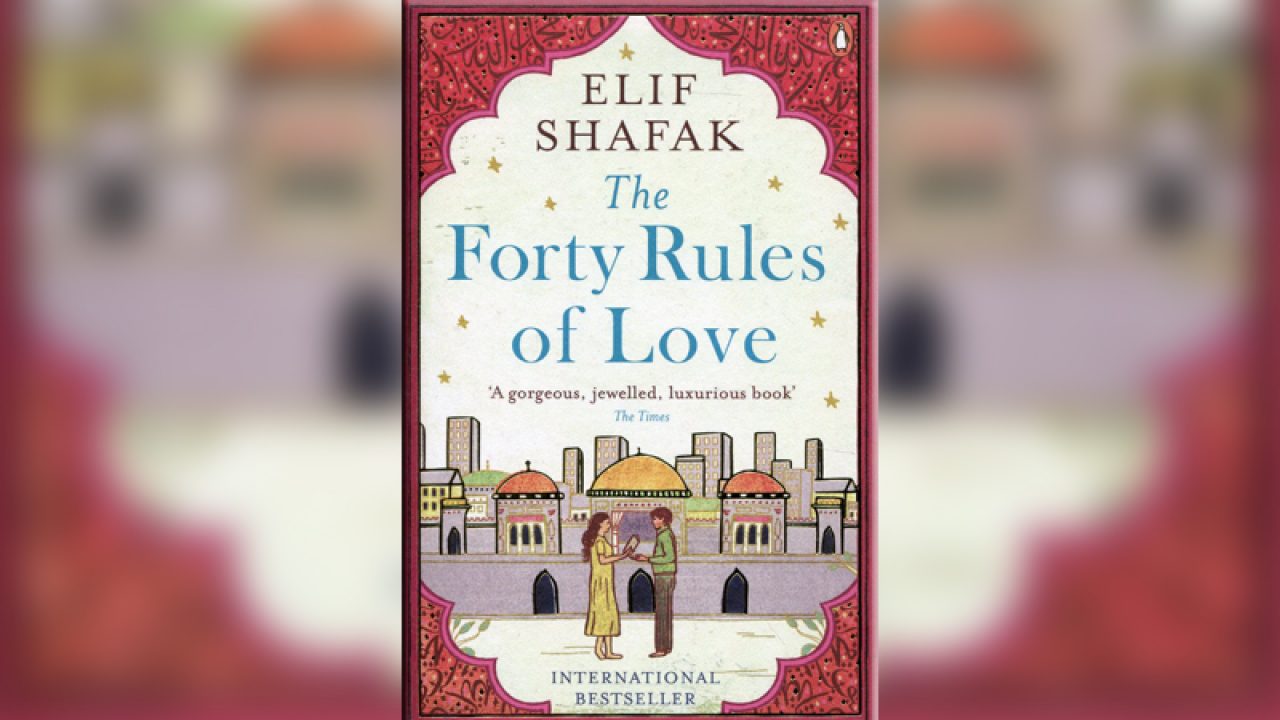The Turkish Novelist Elif Shafak’s, The Forty Rules of Love, is a beautifully woven tapestry of two intertwining narratives set in different time periods. While the book delves into the essence of love and spirituality, it also highlights the complex dilemma of marriage and delves deep into the exploration of female identity. With vivid characters and thought-provoking themes, Shafak’s masterpiece captures the struggles and triumphs of women through history, ultimately challenging societal norms and the meaning of love and relationships.
The dilemma of marriage: A historical perspective
The novel presents the story of Ella, a middle-aged American woman, who is trapped in a loveless marriage with David. She becomes the literary agent for the novel’s second protagonist, Rumi, an influential 13th-century poet. Through Ella’s journey of reading Rumi’s book, we witness her marriage crumbling and her heart opening up to new possibilities.
Ella’s marriage represents a common dilemma faced by many women throughout history – the struggle between societal expectations and personal desires. In her relationship with David, she feels confined and unfulfilled, realising that the love she yearns for has eluded her for years. Shafak illustrates how marriage can become a stifling institution when based on societal norms rather than genuine emotional connections.

Rumi, on the other hand, challenges conventional notions of love and marriage. As a Sufi mystic, he transcends earthly attachments and seeks a higher spiritual love. Through his poems and teachings, Rumi encourages readers to question the conventional roles of husband and wife, emphasising the importance of a soulful connection in a relationship rather than simply fulfilling societal expectations.
Female Identity and empowerment
Within the pages of The Forty Rules of Love, Elif Shafak masterfully explores the multifaceted nature of female identity across different eras. The novel offers a glimpse into the lives of remarkable historical female figures, including the Shams of Tabriz and Rumi’s wife, Kimya.
Shams of Tabriz: Shams, a wandering dervish and Rumi’s spiritual mentor challenges traditional gender roles and expectations. In the 13th century, women were often relegated to subordinate positions, and their voices were stifled. However, Shams represents a liberated soul who defies societal norms and dares to seek knowledge and wisdom. By embracing her unique identity, Shams becomes an empowering figure for women, encouraging them to break free from societal constraints and find their true selves.

Kimya: Rumi’s wife, Kimya, personifies the struggles of many women who were expected to conform to rigid gender roles. Despite her profound love for Rumi, Kimya faces loneliness and the pain of being in a marriage where her desires and aspirations are overshadowed. Through Kimya, Shafak portrays the sacrifices and compromises many women had to make in the past, highlighting the importance of self-discovery and self-love in defining one’s identity.
The Forty Rules Of Love: The redefinition of love and relationships
As Ella delves deeper into Rumi’s poetry, she begins to question her own understanding of love and relationships. The novel’s exploration of love extends beyond romantic entanglements to encompass self-love, platonic connections, and spiritual bonds.
Divine Love: “You can study God through everything and everyone in the universe because God is not confined in a mosque, synagogue or church. But if you are still in need of knowing exactly where his abode is, there is only one place to look for him: in the heart of a true lover.”
Rumi’s poetry is an ode to divine love, transcending the boundaries of conventional romantic relationships. His teachings revolve around embracing love in all its forms, including the love for God, the universe, and fellow human beings. This broader perspective challenges the notion of love being confined solely to marriage or romantic partnerships.
Rumi’s poetry is an ode to divine love, transcending the boundaries of conventional romantic relationships. His teachings revolve around embracing love in all its forms, including the love for God, the universe, and fellow human beings. This broader perspective challenges the notion of love being confined solely to marriage or romantic partnerships.
Self-Love: The novel emphasises the importance of self-love as a foundation for building meaningful connections with others. Ella’s journey towards self-discovery and self-acceptance mirrors the struggle of many women who often forget their own worthwhile trying to fulfil societal expectations. Shafak urges readers to prioritise self-love and authenticity, as only then can one cultivate genuine relationships with others. We must acknowledge the inner self by then we can enfold the multiple shades of life.

Spiritual Bonds: The Forty Rules of Love explores the profound connection between two souls in search of spiritual growth. The bond between Rumi and Shams represents a profound platonic connection that challenges societal perceptions of friendship and intimacy. Through their relationship, Shafak advocates breaking down barriers that limit the depth of emotional connections between individuals.
The Forty Rules Of Love: The drive of mysticism
Elif Shafak showcases the drive of mysticism through the spiritual journey of Rumi and Shams of Tabriz. Through their interactions, teachings, and poetry, the novel celebrates the transformative power of mysticism, emphasising the quest for spiritual connection, the dissolution of the ego, and the pursuit of divine love and unity. By exploring these mystical elements, the novel invites readers to contemplate the deeper aspects of spirituality and the potential for self-discovery and enlightenment.
The journey from ordinary to exemplary woman
Elif Shafak illustrates the magical awakening self-portrait of Ella Rubenstein’s journey from an ordinary, unfulfilled woman to an exemplary individual which is a central and transformative narrative in the novel. Ella’s character undergoes a profound evolution as she becomes the contemporary parallel to the 13th-century poet, Rumi.
As she is struck in loveless and unsatisfying marriage with David who doesn’t value her and takes her for granted. However, Ella’s life takes a significant turn when she becomes the literary agent for Aziz Zahara’s book on Rumi and Shams. Through reading this manuscript, Ella starts to connect with the spiritual and transformative teachings of Rumi and the unorthodox character of Shams.

Ella’s encounter with the unconventional relationship between Rumi and Shams challenges her worldview. It sparks a desire for something deeper and more meaningful than the mundane existence she’s been leading. As Ella delves deeper into Rumi’s poetry and Shams’ teachings, she begins to question her own life and desires. She realises that she has been suppressing her true self to conform to societal expectations. This self-discovery is the first step towards her transformation. Ella’s encounter with Aziz Zahara, the author of the Rumi manuscript, also plays a pivotal role in her journey. Through their interactions, Ella learns about the parallels between her life and Rumi’s life, which further catalyzes her transformation.
Ella’s growing fascination with Rumi and Shams leads her to take risks and follow her passion for literature and spirituality. She starts to prioritise her interests and dreams, breaking free from the limitations of her mundane existence. However, Ella’s connection with Aziz Zahara becomes deeper and more intimate. Through their interactions, Ella learns about the power of genuine connections and the possibility of profound emotional bonds.
Ella’s growing fascination with Rumi and Shams leads her to take risks and follow her passion for literature and spirituality. She starts to prioritise her interests and dreams, breaking free from the limitations of her mundane existence. However, Ella’s connection with Aziz Zahara becomes deeper and more intimate. Through their interactions, Ella learns about the power of genuine connections and the possibility of profound emotional bonds. Eventually, Ella’s journey leads her to reevaluate her feelings for David. She recognises that her love for him has dwindled, and she bravely confronts the reality of their failing marriage. She learns to let go of the past and embrace the uncertainties of her future.

Taking everything into account, Elif Shafak’s The Forty Rules of Love is a literary masterpiece that goes beyond a simple love story. It serves as a mirror reflecting the struggles faced by women in navigating societal norms and expectations while seeking to understand their true selves. The novel highlights the dilemma of marriage, encouraging readers to reevaluate the essence of relationships. Additionally, it empowers women by presenting historical female figures who dared to defy norms and embrace their unique identities.
Through the spiritual teachings of Rumi and the transformative journey of Ella, Shafak ultimately invites readers to redefine love, relationships, and female identity in a world that often imposes limitations and restrictions. In doing so, The Forty Rules of Love ignites a powerful dialogue that challenges the status quo and inspires women to reclaim their narratives and destinies.





‘The novel offers a glimpse into the lives of remarkable historical female figures, including the Shams of Tabriz’
The author of this piece assigns a feminine gender to Shamz, which is not right. The novel also makes no such claim as far as I remember. Please relook into this.
Thanks.